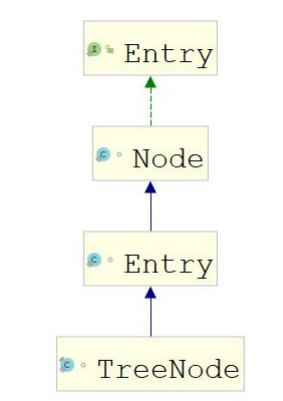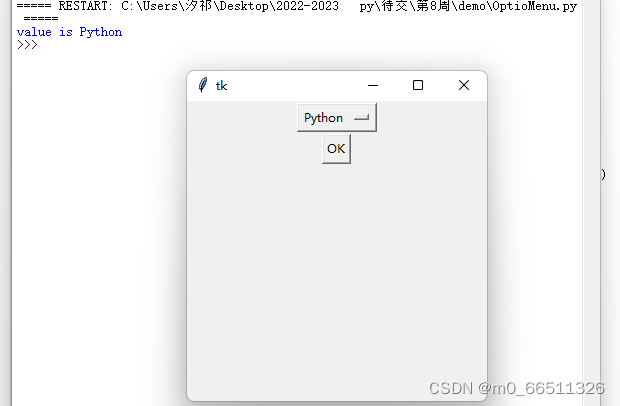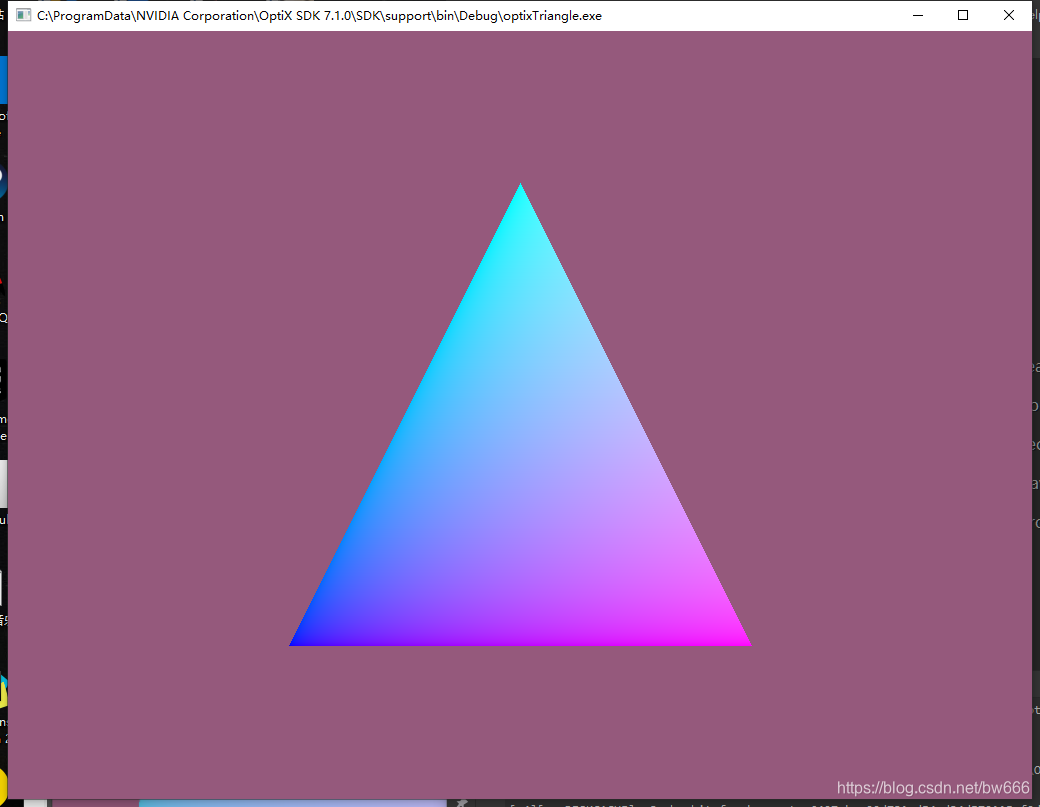1 容器简介
容器,是用来容纳物体、管理物体。生活中,我们会用到各种各样的容器。如锅碗瓢盆、 箱子和包等。如图所示:

程序中的“容器”也有类似的功能,用来容纳和管理数据。比如,如下新闻网站的新闻 列表、教育网站的课程列表就是用“容器”来管理:
视频课程信息也是使用“容器”来管理:

开发和学习中需要时刻和数据打交道,如何组织这些数据是我们编程中重要的内容。我 们一般通过“容器”来容纳和管理数据。事实上,我们前面所学的数组就是一种容器,可以 在其中放置对象或基本类型数据。
数组的优势:是一种简单的线性序列,可以快速地访问数组元素,效率高。如果从效率和类型检查的角度讲,数组是最好的。
数组的劣势:不灵活。容量需要事先定义好,不能随着需求的变化而扩容。比如:我们 在一个用户管理系统中,要把今天注册的所有用户取出来,那么这样的用户有多少个?我们 在写程序时是无法确定的。因此,在这里就不能使用数组。
基于数组并不能满足我们对于“管理和组织数据的需求”,所以我们需要一种更强大、 更灵活、容量随时可扩的容器来装载我们的对象。 这就是我们今天要学习的容器。容器 (Collection)也称之为集合。
2 容器的结构
2.1 结构图

2.1.1 单例集合
单例集合:将数据一个一个的进行存储。如图所示:

2.1.2 双例集合
双例集合:基于 Key 与 Value 的结构存储数据。
3 单利集合的使用
3.1Collection 接口介绍 Collection 是单例集合根接口,它是集中、收集的意思。Collection 接口的两个子接 口是 List、Set 接口。
3.2 Collection 接口中的抽象方法

由于 List、Set 是 Collection 的子接口,意味着所有 List、Set 的实现类都有上面的方 法。我们下一节中,通过 ArrayList 实现类来测试上面的方法。
JDK8 之后,Collection 接口新增的方法(将在 JDK 新特性和函数式编程中介绍):

3.3 List 接口介绍
3.3.1 List 接口特点
有序:有序(元素存入集合的顺序和取出的顺序一致)。List 中每个元素都有索引标记。 可以根据元素的索引标记(在 List 中的位置)访问元素,从而精确控制这些元素。
可重复:List 允许加入重复的元素。更确切地讲,List 通常允许满足 e1.equals(e2) 的 元素重复加入容器。
3.3.2 List 的常用方法
除了 Collection 接口中的方法,List 多了一些跟顺序(索引)有关的方法,参见下表:
3.4 ArrayList 容器类
ArrayList 是 List 接口的实现类。是 List 存储特征的具体实现。
ArrayList 底层是用数组实现的存储。 特点:查询效率高,增删效率低,线程不安全。
3.4.1 添加元素
演示的代码如下:
package com.txw.arrarylist;import java.util.ArrayList;
import java.util.List;
/*** 添加元素* @author Adair* @email 1578533828@qq.com*/
@SuppressWarnings("all") //注解警告信息
public class ArrayListTest {public static void main(String[] args) {// 实例化ArrayList容器List<String> list = new ArrayList<>();// 添加元素boolean flag = list.add("Adir");boolean flag1 = list.add("Mars");System.out.println(flag);// 索引的数值不能大于元素的个数。list.add(3,"Oldlu");}
}
如图所示:
3.4.2 获取元素


演示的代码如下:
package com.txw.arrarylist;import java.util.ArrayList;
import java.util.List;
/*** 获取元素* @author Adair* @email 1578533828@qq.com*/
@SuppressWarnings("all") //注解警告信息
public class ArrayListTest {public static void main(String[] args) {// 实例化ArrayList容器List<String> list = new ArrayList<>();// 添加元素boolean flag = list.add("Adir");boolean flag1 = list.add("Mars");System.out.println(flag);// 索引的数值不能大于元素的个数。
// list.add(3,"Oldlu");// 通过指定索引位置获取元素System.out.println(list.get(0));System.out.println(list.get(1));System.out.println("---------------");// 通过循环获取集合中所用元素,size():返回集合中元素个数for(int i=0;i<list.size();i++){System.out.println(list.get(i));}}
}
如图所示:
3.4.3 删除元素
3.4.3.1 根据索引删除元素

演示的代码如下:
package com.txw.arrarylist;import java.util.ArrayList;
import java.util.List;
/*** 根据索引位置删除元素* @author Adair* @email 1578533828@qq.com*/
@SuppressWarnings("all") //注解警告信息
public class ArrayListTest {public static void main(String[] args) {// 实例化ArrayList容器List<String> list = new ArrayList<>();// 添加元素list.add("Adir");list.add("Mars");list.add("Oldlu");// 根据索引位置删除元素String value = list.remove(2);System.out.println(value);for (int i = 0; i < list.size(); i++) {System.out.println(list.get(i));}}
}
如图所示:
3.4.3.2 删除指定元素

演示的代码如下:
package com.txw.arrarylist;import java.util.ArrayList;
import java.util.List;
/*** 删除指定元素* @author Adair* @email 1578533828@qq.com*/
@SuppressWarnings("all") //注解警告信息
public class ArrayListTest {public static void main(String[] args) {// 实例化ArrayList容器List<String> list = new ArrayList<>();// 添加元素list.add("Adir");list.add("Mars");list.add("Oldlu");//删除指定元素boolean flag = list.remove("itbz");System.out.println(flag);for(int i = 0;i < list.size();i++){System.out.println(list.get(i));}}
}
如图所示:
3.4.4 替换元素

演示的代码如下:
package com.txw.arrarylist;import java.util.ArrayList;
import java.util.List;
/*** 替换元素* @author Adair* @email 1578533828@qq.com*/
@SuppressWarnings("all") //注解警告信息
public class ArrayListTest {public static void main(String[] args) {// 实例化ArrayList容器List<String> list = new ArrayList<>();// 添加元素list.add("Adir");list.add("Mars");list.add("Oldlu");// 替换元素String val = list.set(0, "Adair999");System.out.println(val);for(int i = 0;i < list.size();i++){System.out.println(list.get(i));}}
}
如图所示:
3.4.5 清空容器

演示的代码如下:
package com.txw.arrarylist;import java.util.ArrayList;
import java.util.List;
/*** 清空容器* @author Adair* @email 1578533828@qq.com*/
@SuppressWarnings("all") //注解警告信息
public class ArrayListTest {public static void main(String[] args) {// 实例化ArrayList容器List<String> list = new ArrayList<>();// 添加元素list.add("Adir");list.add("Mars");list.add("Oldlu");// 替换元素String val = list.set(0, "Adair999");System.out.println(val);for(int i = 0;i < list.size();i++){System.out.println(list.get(i));}// 清空容器list.clear();System.out.println(list.size());}
}
如图所示:

3.4.6 判断容器是否为空

演示的代码如下:
package com.txw.arrarylist;import java.util.ArrayList;
import java.util.List;
/*** 判断容器是否为空* @author Adair* @email 1578533828@qq.com*/
@SuppressWarnings("all") //注解警告信息
public class ArrayListTest {public static void main(String[] args) {// 实例化ArrayList容器List<String> list = new ArrayList<>();// 添加元素list.add("Adir");list.add("Mars");list.add("Oldlu");// 如果容器为空则返回true,否则返回falseboolean flag = list.isEmpty();System.out.println("flag = " + flag);}
}
如图所示:
3.4.7 判断容器中是否包含指定元素
演示的代码如下:
package com.txw.arrarylist;import java.util.ArrayList;
import java.util.List;
/*** 判断容器中是否包含指定元素* @author Adair* @email 1578533828@qq.com*/
@SuppressWarnings("all") //注解警告信息
public class ArrayListTest {public static void main(String[] args) {// 实例化ArrayList容器List<String> list = new ArrayList<>();// 添加元素list.add("Adir");list.add("Mars");list.add("Oldlu");// 如果在容器中包含指定元素则返回true,否则返回false。boolean flag = list.contains("Adair111");System.out.println("flag = " + flag);}
}
如图所示:
3.4.8 查找元素的位置
3.4.8.1 查找元素第一次出现的位置

演示的代码如下:
package com.txw.arrarylist;import java.util.ArrayList;
import java.util.List;
/*** 查找元素第一次出现的位置* @author Adair* @email 1578533828@qq.com*/
@SuppressWarnings("all") //注解警告信息
public class ArrayListTest {public static void main(String[] args) {// 实例化ArrayList容器List<String> list = new ArrayList<>();// 添加元素list.add("Adir");list.add("Mars");list.add("Oldlu");// indexOf 方法返回的是元素在容器中第一次出现的位置。// 在容器中不存在则返回-1int index = list.indexOf("Adair999");System.out.println("index = " + index);}
}
如图所示:
3.4.8.2 查找元素最后一次出现的位置
 演示的代码如下:
演示的代码如下:
package com.txw.arrarylist;import java.util.ArrayList;
import java.util.List;
/*** 查找元素最后一次出现的位置* @author Adair* @email 1578533828@qq.com*/
@SuppressWarnings("all") //注解警告信息
public class ArrayListTest {public static void main(String[] args) {// 实例化ArrayList容器List<String> list = new ArrayList<>();// 添加元素list.add("Adir");list.add("Mars");list.add("Oldlu");// lastIndexOf 方法返回的是元素在容器中最后一次出现的位置,如果元素// 在容器中不存在则返回-1int index = list.lastIndexOf("Adair999");System.out.println("index = " + index);}
}
如图所示:
3.4.9 将单例集合转换成数组
3.4.9.1 转换为 Object 数组

演示的代码如下:
package com.txw.arrarylist;import java.util.ArrayList;
import java.util.List;
/*** 转换为Object数组* @author Adair* @email 1578533828@qq.com*/
@SuppressWarnings("all") //注解警告信息
public class ArrayListTest {public static void main(String[] args) {// 实例化ArrayList容器List<String> list = new ArrayList<>();// 添加元素list.add("Adir");list.add("Mars");list.add("Oldlu");// 将ArrayList转换为Object[]。// 但是不能将转换的数组做强制类型转换。Object[] arr = list.toArray();for (int i = 0; i < arr.length; i++) {String str = (String)arr[i];System.out.println(arr);}}
}
如图所示:
3.4.9.2 转换泛型类型数组

演示的代码如下:
package com.txw.arrarylist;import java.util.ArrayList;
import java.util.List;
/*** 转换泛型类型数组* @author Adair* @email 1578533828@qq.com*/
@SuppressWarnings("all") //注解警告信息
public class ArrayListTest {public static void main(String[] args) {// 实例化ArrayList容器List<String> list = new ArrayList<>();// 添加元素list.add("Adir");list.add("Mars");list.add("Oldlu");// 可以将单例集合转换为指定类型数组。// 但是。类型需要参考泛型中的类型String[] arr = list.toArray(new String[list.size()]);for (int i = 0; i < arr.length; i++) {System.out.println(arr[i]);}}
}
如图所示:
3.4.10 容器的并集操作

演示的代码如下:
package com.txw.arrarylist;import java.util.ArrayList;
import java.util.List;
/*** 容器的并集操作* @author Adair* @email 1578533828@qq.com*/
@SuppressWarnings("all") //注解警告信息
public class ArrayListTest {public static void main(String[] args) {// 容器的并集操作List<String> a = new ArrayList<>();a.add("a");a.add("b");a.add("c");List<String> b = new ArrayList<>();b.add("b");b.add("c");b.add("d");// a并bboolean flag = a.addAll(b);System.out.println(flag);for (String s : a) {System.out.println(s);}}
}
如图所示:
3.4.11 容器的交集操作

演示的代码如下:
package com.txw.arrarylist;import java.util.ArrayList;
import java.util.List;
/*** 容器的交集操作* @author Adair* @email 1578533828@qq.com*/
@SuppressWarnings("all") //注解警告信息
public class ArrayListTest {public static void main(String[] args) {// 容器的交集操作List<String> a = new ArrayList<>();a.add("a");a.add("b");a.add("c");List<String> b = new ArrayList<>();b.add("b");b.add("c");b.add("d");// a并bboolean flag = a.retainAll(b);System.out.println(flag);for (String s : a) {System.out.println(s);}}
}
如图所示:
3.4.12 容器的差集操作

演示的代码如下:
package com.txw.arrarylist;import java.util.ArrayList;
import java.util.List;
/*** 容器的差集操作* @author Adair* @email 1578533828@qq.com*/
@SuppressWarnings("all") //注解警告信息
public class ArrayListTest {public static void main(String[] args) {// 容器的差集操作List<String> a = new ArrayList<>();a.add("a");a.add("b");a.add("c");List<String> b = new ArrayList<>();b.add("b");b.add("c");b.add("d");// a并bboolean flag = a.removeAll(b);System.out.println(flag);for (String s : a) {System.out.println(s);}}
}
如图所示:
3.4.13 ArrayList 源码分析
3.4.13 ArrayList 源码分析
ArrayList 底层是用数组实现的存储。
/*** Default initial capacity.*/private static final int DEFAULT_CAPACITY = 10;/*** The array buffer into which the elements of the ArrayList are stored.* The capacity of the ArrayList is the length of this array buffer. Any* empty ArrayList with elementData == DEFAULTCAPACITY_EMPTY_ELEMENTDATA* will be expanded to DEFAULT_CAPACITY when the first element is added.*/transient Object[] elementData; // non-private to simplify nested class access/*** The size of the ArrayList (the number of elements it contains).** @serial*/private int size;
3.4.13.2 初始容量
/*** Default initial capacity.*/private static final int DEFAULT_CAPACITY = 10;
3.4.13.3 添加元素
/*** Appends the specified element to the end of this list.** @param e element to be appended to this list* @return <tt>true</tt> (as specified by {@link Collection#add})*/public boolean add(E e) {ensureCapacityInternal(size + 1); // Increments modCount!!elementData[size++] = e;return true;}/*** Inserts the specified element at the specified position in this* list. Shifts the element currently at that position (if any) and* any subsequent elements to the right (adds one to their indices).** @param index index at which the specified element is to be inserted* @param element element to be inserted* @throws IndexOutOfBoundsException {@inheritDoc}*/public void add(int index, E element) {rangeCheckForAdd(index);ensureCapacityInternal(size + 1); // Increments modCount!!System.arraycopy(elementData, index, elementData, index + 1,size - index);elementData[index] = element;size++;}
3.4.13.4 数组扩容
// 容量检查private void ensureCapacityInternal(int minCapacity) {ensureExplicitCapacity(calculateCapacity(elementData, minCapacity));}
// 容量确认
private void ensureExplicitCapacity(int minCapacity) {modCount++;// 判断是否需要扩容,数组中的元素个数-数组长度,如果大于 0 表明需要扩容if (minCapacity - elementData.length > 0)grow(minCapacity);} /*** Increases the capacity to ensure that it can hold at least the* number of elements specified by the minimum capacity argument.** @param minCapacity the desired minimum capacity*/private void grow(int minCapacity) {// overflow-conscious codeint oldCapacity = elementData.length;// 扩容 1.5 倍int newCapacity = oldCapacity + (oldCapacity >> 1);if (newCapacity - minCapacity < 0)newCapacity = minCapacity;if (newCapacity - MAX_ARRAY_SIZE > 0)newCapacity = hugeCapacity(minCapacity);// minCapacity is usually close to size, so this is a win:elementData = Arrays.copyOf(elementData, newCapacity);}
3.5 Vector 容器类
Vector 底层是用数组实现的,相关的方法都加了同步检查,因此“线程安全,效率低”。 比如,indexOf 方法就增加了 synchronized 同步标记。
3.5.1 Vector 的使用
Vector 的使用与 ArrayList 是相同的,因为他们都实现了 List 接口,对 List 接口中的抽象 方法做了具体实现。
演示的代码如下:
package com.txw.arrarylist;import java.util.List;
import java.util.Vector;
/*** Vector的使用* @author Adair* @email 1578533828@qq.com*/
@SuppressWarnings("all") //注解警告信息
public class VectorTest {public static void main(String[] args) {// 实例化VectorList<String> v = new Vector<>();v.add("a");v.add("b");v.add("a");for (int i = 0; i < v.size(); i++) {System.out.println(v.get(i));}System.out.println("----------------------");for (String s : v) {System.out.println(s);}}
}
如图所示:
3.5.2 Vector源码分析
3.5.2.1 初始化容器
/*** The array buffer into which the components of the vector are* stored. The capacity of the vector is the length of this array buffer,* and is at least large enough to contain all the vector's elements.** <p>Any array elements following the last element in the Vector are null.** @serial*/protected Object[] elementData;/*** Constructs an empty vector so that its internal data array* has size {@code 10} and its standard capacity increment is* zero.*/public Vector() {this(10);}/*** Constructs an empty vector with the specified initial capacity and* capacity increment.** @param initialCapacity the initial capacity of the vector* @param capacityIncrement the amount by which the capacity is* increased when the vector overflows* @throws IllegalArgumentException if the specified initial capacity* is negative*/public Vector(int initialCapacity, int capacityIncrement) {super();if (initialCapacity < 0)throw new IllegalArgumentException("Illegal Capacity: "+initialCapacity);this.elementData = new Object[initialCapacity];this.capacityIncrement = capacityIncrement;}
3.5.2.2 添加元素
/*** Appends the specified element to the end of this Vector.** @param e element to be appended to this Vector* @return {@code true} (as specified by {@link Collection#add})* @since 1.2*/public synchronized boolean add(E e) {modCount++;ensureCapacityHelper(elementCount + 1);elementData[elementCount++] = e;return true;}
3.5.2.3 数组扩容
/*** This implements the unsynchronized semantics of ensureCapacity.* Synchronized methods in this class can internally call this* method for ensuring capacity without incurring the cost of an* extra synchronization.** @see #ensureCapacity(int)*/private void ensureCapacityHelper(int minCapacity) {// 判断是否需要扩容,数组中的元素个数-数组长度,如果大于 0 表明需要扩容if (minCapacity - elementData.length > 0)grow(minCapacity);}private void grow(int minCapacity) {// overflow-conscious codeint oldCapacity = elementData.length;// 扩容2倍int newCapacity = oldCapacity + ((capacityIncrement > 0) ?capacityIncrement : oldCapacity);if (newCapacity - minCapacity < 0)newCapacity = minCapacity;if (newCapacity - MAX_ARRAY_SIZE > 0)newCapacity = hugeCapacity(minCapacity);elementData = Arrays.copyOf(elementData, newCapacity);}
3.5.3 Stack 容器
3.5.3.1 Stack 容器介绍
Stack 栈容器,是 Vector 的一个子类,它实现了一个标准的后进先出(LIFO:Last In Frist Out) 的栈。
3.5.3.1.1 Stack 特点是
后进先出。它通过 5 个操作方法对 Vector 进行扩展,允许将向量视为堆栈。
3.5.3.1.2 操作栈的方法
3.5.3.2 Stack 的使用
演示的代码如下:
package com.txw.arrarylist;import java.util.Stack;
/*** Stack的使用* @author Adair* @email 1578533828@qq.com*/
@SuppressWarnings("all") //注解警告信息
public class StackTest {public static void main(String[] args) {// 实例化栈容器Stack<String> stack = new Stack<>();// 将元素添加到栈容器中stack.push("a");stack.push("b");stack.push("c");// 判断栈容器是否为空System.out.println(stack.isEmpty());// 查看栈顶元素System.out.println(stack.peek());// 返回元素在栈容器中的位置System.out.println(stack.search("c"));// 获取栈容器中的元素String p1 = stack.pop();System.out.println(p1);String p2 = stack.pop();System.out.println(p2);String p3 = stack.pop();System.out.println(p3);}
}
如图所示:
3.5.3.3 Stack的使用案例
代码如下:
package com.txw.arrarylist;import java.util.Stack;
/*** Stack的使用案例* @author Adair* @email 1578533828@qq.com*/
@SuppressWarnings("all") //注解警告信息
public class StackTest {public static void main(String[] args) {// 判断元素的对称性 String str="...{.....[....(....)...]....}..(....)..[...]...";StackTest stackTest = new StackTest();stackTest.symmetry();}// 匹配符号的对称性public void symmetry(){String str="...{.....[....(....)...]....}..(....)..[...].(.).";// 实例化StackStack<String> stack = new Stack<>();// 假设修正法// 假设是匹配的boolean flag = true;// 拆分字符串获取字符for (int i = 0; i < str.length(); i++) {char c = str.charAt(i);if(c == '{'){stack.push("}");}if(c == '['){stack.push("]");}if(c == '('){stack.push(")");}// 判断符号是否匹配if(c == '}' || c == ']' || c == ')'){if (stack.isEmpty()){// 修正处理flag = false;break;}String x = stack.pop();if(x.charAt(0) != c){// 修正处理flag = false;break;}}}if (!stack.isEmpty()){// 修正处理flag = false;}System.out.println(flag);}
}
如图所示:
3.6 LinkedList 容器类
LinkedList 底层用双向链表实现的存储。特点:查询效率低,增删效率高,线程不安全。 双向链表也叫双链表,是链表的一种,它的每个数据节点中都有两个指针,分别指向前 一个节点和后一个节点。 所以,从双向链表中的任意一个节点开始,都可以很方便地找到 所有节点。
3.6.1 双向链表介绍

class Node<E> {E item;Node<E> next; Node<E> prev;
}
3.6.2 LinkedList 的使用(List 标准)
LinkedList 实现了 List 接口,所以 LinkedList 是具备 List 的存储特征的(有序,元素有重复)。代码如下:
package com.txw.arrarylist;import java.util.LinkedList;
import java.util.List;
/*** LinkedList的使用* @author Adair* @email 1578533828@qq.com*/
@SuppressWarnings("all") //注解警告信息
public class LinkedListTest {public static void main(String[] args) {List<String> list = new LinkedList<>();// 添加元素list.add("a");list.add("b");list.add("c");list.add("a");// 获取元素for (int i = 0; i < list.size(); i++) {System.out.println(list.get(i));}System.out.println("=========================");for (String s : list) {System.out.println(s);}}
}
如图所示:
3.6.3 LinkedList 的使用(非 List 标准)


演示的代码如下:
package com.txw.arrarylist;import java.util.LinkedList;
/*** LinkedList的使用* @author Adair* @email 1578533828@qq.com*/
@SuppressWarnings("all") //注解警告信息
public class LinkedListTest {public static void main(String[] args) {System.out.println("-------LinkedList-------------");LinkedList<String> linkedList1 = new LinkedList<>();linkedList1.addFirst("a"); linkedList1.addFirst("b");linkedList1.addFirst("c");for (String str:linkedList1){System.out.println(str);}System.out.println("----------------------");LinkedList<String> linkedList = new LinkedList<>();linkedList.addLast("a");linkedList.addLast("b");linkedList.addLast("c");for (String str:linkedList){System.out.println(str);}System.out.println("---------------------------");System.out.println(linkedList.getFirst());System.out.println(linkedList.getLast());System.out.println("-----------------------");linkedList.removeFirst();linkedList.removeLast();for (String str:linkedList){System.out.println(str);}System.out.println("-----------------------");linkedList.addLast("c");linkedList.pop();for (String str:linkedList){System.out.println(str);}System.out.println("-------------------");linkedList.push("h");for (String str:linkedList){System.out.println(str);}System.out.println(linkedList.isEmpty());}
}
如图所示:
3.6.4 LinkedList 源码分析
3.6.4.1 节点类
private static class Node<E> {E item; Node<E> next;Node<E> prev; Node(Node<E> prev, E element, Node<E> next) {this.item = element; this.next = next;this.prev = prev;}
}
3.6.4.2 成员变量
transient int size = 0;/*** Pointer to first node.* Invariant: (first == null && last == null) ||* (first.prev == null && first.item != null)*/transient Node<E> first;/*** Pointer to last node.* Invariant: (first == null && last == null) ||* (last.next == null && last.item != null)*/transient Node<E> last;
3.6.4.3 添加元素
/*** Appends the specified element to the end of this list.** <p>This method is equivalent to {@link #addLast}.** @param e element to be appended to this list* @return {@code true} (as specified by {@link Collection#add})*/public boolean add(E e) {linkLast(e);return true;}/*** Links e as last element.*/void linkLast(E e) {final Node<E> l = last;final Node<E> newNode = new Node<>(l, e, null);last = newNode;if (l == null)first = newNode;elsel.next = newNode;size++;modCount++;}
3.6.4.4 头尾添加元素
3.6.4.4.1 addFirst
/*** Inserts the specified element at the beginning of this list.** @param e the element to add*/public void addFirst(E e) {linkFirst(e);}/*** Links e as first element. */private void linkFirst(E e) {final Node<E> f = first;final Node<E> newNode = new Node<>(null, e, f);first = newNode;if (f == null) last = newNode;elsef.prev = newNode;size++; modCount++;}}
3.6.4.4.2 addLast
/***Appends the specified element to the end of this list. * <p>This method is equivalent to {@link #add}. * @param e the element to add */public void addLast(E e) { linkLast(e); }/*** Links e as last element. */void linkLast(E e) {final Node<E> l = last; final Node<E> newNode = new Node<>(l, e, null); last = newNode;if (l == null) first = newNode; elsel.next = newNode;size++;modCount++; }
3.6.4.5 在指定位置添加元素
/*** Inserts the specified element at the specified position in this list. * Shifts the element currently at that position (if any) and any* subsequent elements to the right (adds one to their indices). * @param index index at which the specified element is to be inserted * @param element element to be inserted * @throws IndexOutOfBoundsException {@inheritDoc}*/public void add(int index, E element) { checkPositionIndex(index); if (index == size) linkLast(element); elselinkBefore(element, node(index)); }private void checkPositionIndex(int index) { if (!isPositionIndex(index)) throw new IndexOutOfBoundsException(outOfBoundsMsg(index)); }/*** Links e as last element. */void linkLast(E e) {final Node<E> l = last; final Node<E> newNode = new Node<>(l, e, null); last = newNode;if (l == null) first = newNode; elsel.next = newNode;size++;modCount++; }/*** Returns the (non-null) Node at the specified element index.*/
Node<E> node(int index) {// assert isElementIndex(index);if (index < (size >> 1)) {Node<E> x = first;for (int i = 0; i < index; i++) x = x.next; return x; } else { Node<E> x = last; for (int i = size - 1; i > index; i--)x = x.prev; return x;}/*** Inserts element e before non-null Node succ.*/void linkBefore(E e, Node<E> succ) {// assert succ != null; final Node<E> pred = succ.prev;final Node<E> newNode = new Node<>(pred, e, succ); succ.prev = newNode; if (pred == null)first = newNode; elsepred.next = newNode; size++;modCount++;}
3.6.4.6 获取元素
/*** Returns the element at the specified position in this list.** @param index index of the element to return* @return the element at the specified position in this list* @throws IndexOutOfBoundsException {@inheritDoc}*/public E get(int index) {checkElementIndex(index);return node(index).item;}private void checkElementIndex(int index) { if (!isElementIndex(index)) throw new IndexOutOfBoundsException(outOfBoundsMsg(index));
}/*** Tells if the argument is the index of an existing element. */ private boolean isElementIndex(int index) { return index >= 0 && index < size;}/*** Returns the (non-null) Node at the specified element index.*/Node<E> node(int index) { // assert isElementIndex(index);/if (index < (size >> 1)) { Node<E> x = first; for (int i = 0; i < index; i++) x = x.next; return x; } else {Node<E> x = last; for (int i = size - 1; i > index; i--)x = x.prev; return x; }}
3.6.4.7 删除指定位置元素
/*** Removes the element at the specified position in this list. Shifts any* subsequent elements to the left (subtracts one from their indices).* Returns the element that was removed from the list.** @param index the index of the element to be removed* @return the element previously at the specified position* @throws IndexOutOfBoundsException {@inheritDoc}*/public E remove(int index) {checkElementIndex(index);return unlink(node(index));}private void checkElementIndex(int index) {if (!isElementIndex(index))throw new IndexOutOfBoundsException(outOfBoundsMsg(index));}/*** Tells if the argument is the index of an existing element.*/private boolean isElementIndex(int index) {return index >= 0 && index < size;}/*** Returns the (non-null) Node at the specified element index.*/Node<E> node(int index) {// assert isElementIndex(index);/if (index < (size >> 1)) {Node<E> x = first;for (int i = 0; i < index; i++)x = x.next;return x;} else {Node<E> x = last;for (int i = size - 1; i > index; i--)x = x.prev;return x;}}/*** Unlinks non-null node x.*/E unlink(Node<E> x) {// assert x != null;final E element = x.item;final Node<E> next = x.next;final Node<E> prev = x.prev;if (prev == null) {first = next;} else {prev.next = next;x.prev = null;}if (next == null) {last = prev;} else {next.prev = prev;x.next = null;}x.item = null;size--;modCount++;return element;}
3.7Set 接口介绍
Set 接口继承自 Collection,Set 接口中没有新增方法,方法和 Collection 保持完全一 致。我们在前面通过 List 学习的方法,在 Set 中仍然适用。因此,学习 Set 的使用将没有 任何难度。
3.7.1 Set 接口特点
Set 特点:无序、不可重复。无序指 Set 中的元素没有索引,我们只能遍历查找;不可 重复指不允许加入重复的元素。更确切地讲,新元素如果和 Set 中某个元素通过 equals() 方法对比为 true,则只能保留一个。
Set 常用的实现类有:HashSet、TreeSet 等,我们一般使用 HashSet。
3.7.2 HashSet 容器类
HashSet 是一个没有重复元素的集合,不保证元素的顺序。而且 HashSet 允许有 null 元 素。HashSet 是采用哈希算法实现,底层实际是用 HashMap 实现的(HashSet 本质就是一个 简化版的 HashMap),因此,查询效率和增删效率都比较高。
3.7.2.1 Hash 算法原理
Hash 算法也称之为散列算法。如图所示:
3.7.3 HashSet 的使用
演示的代码如下:
package com.txw.arrarylist;import java.util.HashSet;
import java.util.Set;
/*** HashSet的使用* @author Adair* @email 1578533828@qq.com*/
@SuppressWarnings("all") //注解警告信息
public class HashSetTest {public static void main(String[] args) {// 实例化HashSetSet<String> set = new HashSet<>();// 添加元素set.add("a");set.add("b1");set.add("c2");set.add("a");// 获取元素,在Set容器中没有索引,所以没有对应的 get(int index)方法for (String s : set) {System.out.println(s);}System.out.println("--------------------");// 删除元素boolean flag = set.remove("c2");System.out.println(flag);for (String s : set) {System.out.println(s);}System.out.println("--------------------");int size = set.size();System.out.println(size);}
}
如图所示:
3.7.4 HashSet 存储特征分析
HashSet 是一个不保证元素的顺序且没有重复元素的集合,是线程不安全的。HashSet 允许有 null 元素。
无序:
在 HashSet 中底层是使用 HashMap 存储元素的。HashMap 底层使用的是数组与链表实 现元素的存储。元素在数组中存放时,并不是有序存放的也不是随机存放的,而是对元素的哈希值进行运算决定元素在数组中的位置。
不重复:
当两个元素的哈希值进行运算后得到相同的在数组中的位置时,会调用元素的 equals() 方法判断两个元素是否相同。如果元素相同则不会添加该元素,如果不相同则会使用单向链 表保存该元素。
3.7.5 通过 HashSet 存储自定义对象
3.7.5 通过 HashSet 存储自定义对象
演示的代码如下:
package com.txw.set;import java.util.Objects;
/*** 用户 {@link Users}* @author Adair* @email 1578533828@qq.com*/
@SuppressWarnings("all") // 注解警告信息
public class Users {private String userName;private int userAge;public Users(String userName, int userAge) {this.userName = userName;this.userAge = userAge;}@Overridepublic boolean equals(Object o) {if (this == o) return true;if (o == null || getClass() != o.getClass()) return false;Users users = (Users) o;return userAge == users.userAge && Objects.equals(userName, users.userName);}public String getUserName() {return userName;}public void setUserName(String userName) {this.userName = userName;}public int getUserAge() {return userAge;}public void setUserAge(int userAge) {this.userAge = userAge;}@Overridepublic String toString() {return "Users{" +"userName='" + userName + '\'' +", userAge=" + userAge +'}';}@Overridepublic int hashCode() {int result = userName != null ? userName.hashCode() : 0; result = 31 * result + userAge; return result;}
}
如图所示:
3.7.5.2 在 HashSet 中存储 Users 对象
测试的代码如下:
package com.txw.set;import java.util.HashSet;
import java.util.Set;
/*** 测试在HashSet中存储Users对象* @author Adair* @email 1578533828@qq.com*/
@SuppressWarnings("all") // 注解警告信息
public class Test1 {public static void main(String[] args) {// 实例化HashSetSet<Users> set1 = new HashSet<>();Users users = new Users("Adair",25);Users users1 = new Users("Adair",18);set1.add(users);set1.add(users1);System.out.println(users.hashCode());System.out.println(users1.hashCode());for (Users users2 : set1) {System.out.println(users2);}}
}
如图所示:
3.7.6 HashSet 底层源码分析
3.7.6.1 成员变量
private transient HashMap<E,Object> map;// Dummy value to associate with an Object in the backing Map
private static final Object PRESENT = new Object();
3.7.6.2 添加元素
/*** Adds the specified element to this set if it is not already present.* More formally, adds the specified element <tt>e</tt> to this set if* this set contains no element <tt>e2</tt> such that* <tt>(e==null ? e2==null : e.equals(e2))</tt>.* If this set already contains the element, the call leaves the set* unchanged and returns <tt>false</tt>.** @param e element to be added to this set* @return <tt>true</tt> if this set did not already contain the specified* element*/public boolean add(E e) {return map.put(e, PRESENT)==null;}
3.7.7 TreeSet 容器类
TreeSet 是一个可以对元素进行排序的容器。底层实际是用 TreeMap 实现的,内部维持了一个简化版的 TreeMap,通过 key 来存储 Set 的元素。 TreeSet 内部需要对存储的元 素进行排序,因此,我们需要给定排序规则。
排序规则实现方式:
1.通过元素自身实现比较规则。
2.通过比较器指定比较规则。
3.7.7.1 TreeSet 的使用
演示的代码如下:
package com.txw.set;import java.util.Set;
import java.util.TreeSet;
/*** TreeSet的使用* @author Adair* @email 1578533828@qq.com*/
@SuppressWarnings("all") // 注解警告信息
public class TreeSetTest {public static void main(String[] args) {// 初始化TreeSetSet<String> set = new TreeSet<>();// 添加元素set.add("c");set.add("a");set.add("d");set.add("b");set.add("a");// 获取元素for (String str : set) {System.out.println(str);}}
}
如图所示:
3.7.8 通过元素自身实现比较规则
在元素自身实现比较规则时,需要实现 Comparable 接口中的 compareTo 方法,该方法 中用来定义比较规则。TreeSet 通过调用该方法来完成对元素的排序处理。
3.7.8.1 创建Users类
演示的代码如下:
package com.txw.set;/*** 用户 {@link Users}* @author Adair* @email 1578533828@qq.com*/
@SuppressWarnings("all") // 注解警告信息
public class Users implements Comparable<Users>{private String username;private int userage;public Users(String username, int userage) {this.username = username;this.userage = userage;}public Users() {}public String getUsername() {return username;}public void setUsername(String username) {this.username = username;}public int getUserage() {return userage;}public void setUserage(int userage) {this.userage = userage;}@Overridepublic boolean equals(Object o) {if (this == o) return true;if (o == null || getClass() != o.getClass()) return false;Users users = (Users) o;return userage == users.userage && username.equals(users.username);}@Override public int hashCode() {int result = username != null ? username.hashCode() : 0; result = 31 * result + userage; return result;}@Overridepublic String toString() {return "Users{" +"username='" + username + '\'' +", userage=" + userage +'}';}// 定义比较规则// 正数:大,负数:小,0:相等@Overridepublic int compareTo(Users o){if(this.userage > o.getUserage()){return 1;}if(this.userage == o.getUserage()){return this.username.compareTo(o.getUsername());}return -1;}
}
如图所示:
3.7.8.2 在TreeSet中存放Users对象
测试的代码如下:
package com.txw.set;import java.util.Set;
import java.util.TreeSet;
/*** 在TreeSet中存放Users对象* @author Adair* @email 1578533828@qq.com*/
@SuppressWarnings("all") // 注解警告信息
public class Test1 {public static void main(String[] args) {// 实例化HashSetSet<Users> set1 = new TreeSet<>();Users users = new Users("Adair",25);Users users1 = new Users("Adair",18);Users users2 = new Users("Adair",12);set1.add(users);set1.add(users1);set1.add(users2);for (Users u : set1) {System.out.println(u);}}
}
如图所示:
3.7.9 通过比较器实现比较规则
通过比较器定义比较规则时,我们需要单独创建一个比较器,比较器需要实现 Comparator 接口中的 compare 方法来定义比较规则。在实例化 TreeSet 时将比较器对象交给 TreeSet 来完成元素的排序处理。此时元素自身就不需要实现比较规则了。
3.7.9.1 创建Student类
演示的代码如下:
package com.txw.set;/*** 学生 {@link Student}* @author Adair* @email 1578533828@qq.com*/
@SuppressWarnings("all") // 注解警告信息
public class Student {private String name;private int age;public Student(String name, int age) {this.name = name;this.age = age;}public Student(){}@Overridepublic String toString() {return "Student{" +"name='" + name + '\'' +", age=" + age +'}';}public String getName() {return name;}public void setName(String name) {this.name = name;}public int getAge() {return age;}public void setAge(int age) {this.age = age;}@Overridepublic boolean equals(Object o) {if (this == o)return true;if (o == null || getClass() != o.getClass())return false; Student student = (Student) o;if (age != student.age)return false; return name != null ? name.equals(student.name) : student.name == null;}@Overridepublic int hashCode() {int result = name != null ? name.hashCode() : 0;result = 31 * result + age;return result;}
}
如图所示:
3.7.9.2 创建比较器
演示的代码如下:
package com.txw.set;import java.util.Comparator;
/*** 创建比较器* @author Adair* @email 1578533828@qq.com*/
@SuppressWarnings("all") // 注解警告信息
public class StudentComparator implements Comparator<Student> {/*** 定义比较规则* @param o1* @param o2* @return*/@Overridepublic int compare(Student o1, Student o2) {if(o1.getAge() > o2.getAge()){return 1;}if(o1.getAge() == o2.getAge()){return o1.getName().compareTo(o2.getName());}return -1;}
}
如图所示:
3.7.10 TreeSet 底层源码分析
3.7.10.1 成员变量
/*** The backing map.*/private transient NavigableMap<E,Object> m;// Dummy value to associate with an Object in the backing Mapprivate static final Object PRESENT = new Object();public TreeSet() { this(new TreeMap<E,Object>());}
3.7.10.2 添加元素
/*** Adds the specified element to this set if it is not already present.* More formally, adds the specified element {@code e} to this set if* the set contains no element {@code e2} such that* <tt>(e==null ? e2==null : e.equals(e2))</tt>.* If this set already contains the element, the call leaves the set* unchanged and returns {@code false}.** @param e element to be added to this set* @return {@code true} if this set did not already contain the specified* element* @throws ClassCastException if the specified object cannot be compared* with the elements currently in this set* @throws NullPointerException if the specified element is null* and this set uses natural ordering, or its comparator* does not permit null elements*/public boolean add(E e) {return m.put(e, PRESENT)==null;}
3.8 单例集合使用案例
需求:
产生 1-10 之间的随机数([1,10]闭区间),将不重复的 10 个随机数放到容器中。
3.8.1 使用 List 类型容器实现
演示的代码如下:
package com.txw.arrarylist;import java.util.ArrayList;
import java.util.List;
/*** 使用List类型容器实现* @author Adair* @email 1578533828@qq.com*/
@SuppressWarnings("all") //注解警告信息
public class ListTest {public static void main(String[] args) {List<Integer> list = new ArrayList<>();while (true){// 产生随机数int num = (int) (Math.random() * 10 + 1);// 判断当前元素在容器中是否存在if(!list.contains(num)){list.add(num);}// 结束循环if (list.size() == 10){break;}}for (Integer i : list) {System.out.println(i);}}
}
如图所示:
3.8.2 使用Set类型容器实现
演示的代码如下:
package com.txw.set;import java.util.HashSet;
import java.util.Set;
/*** 使用Set类型容器实现* @author Adair* @email 1578533828@qq.com*/
@SuppressWarnings("all") // 注解警告信息
public class SetTest {public static void main(String[] args) {Set<Integer> set = new HashSet<>();while (true){int num = (int) (Math.random() * 10 +1);// 将元素添加容器中,由于Set类型容器是不允许有重复元素的,所以不需要判断set.add(num);// 结束循环if (set.size() == 10){break;}}for (Integer i : set) {System.out.println(i);}}
}
如图所示:
4 双例集合
4.1 Map 接口介绍
4.1.1 Map 接口特点
Map 接口定义了双例集合的存储特征,它并不是 Collection 接口的子接口。双例集合的存储特 征是以 key 与 value 结构为单位进行存储。体现的是数学中的函数 y=f(x)感念。
Map 与 Collecton 的区别:
1.Collection 中的容器,元素是孤立存在的(理解为单身),向集合中存储元素采用一个 个元素的方式存储。
2.Map 中的容器,元素是成对存在的(理解为现代社会的夫妻)。每个元素由键与值两部分 组成,通过键可以找对所对应的值。3.Collection 中的容器称为单列集合,Map 中的容器称为双列集合。
4.Map 中的集合不能包含重复的键,值可以重复;每个键只能对应一个值。
5.Map 中常用的容器为 HashMap,TreeMap 等。
4.1.2 Map 的常用方法

4.2 HashMap 容器类
HashMap 是 Map 接口的接口实现类,它采用哈希算法实现,是 Map 接口最常用的实现类。 由于底层采用了哈希表存储数据,所以要求键不能重复,如果发生重复,新的值 会替换旧的值。 HashMap 在查找、删除、修改方面都有非常高的效率。
4.2.1 添加元素
演示的代码如下:
package com.txw.map;import java.util.HashMap;
import java.util.Map;
/*** 添加元素* @author Adair* @email 1578533828@qq.com*/
@SuppressWarnings("all") //注解警告信息
public class HashMapTest {public static void main(String[] args) {// 实例化HashMap容器Map<String,String> map = new HashMap<>();// 添加元素map.put("a","A");String value = map.put("a", "B");System.out.println(value);}
}
如图所示:
4.2.2 获取元素
4.2.2.1 方式一
通过 get 方法获取元素。
演示的代码如下:
package com.txw.map;import java.util.HashMap;
import java.util.Map;
/*** 获取元素* @author Adair* @email 1578533828@qq.com*/
@SuppressWarnings("all") //注解警告信息
public class HashMapTest {public static void main(String[] args) {// 实例化HashMap容器Map<String,String> map = new HashMap<>();// 添加元素map.put("a","A");String value = map.put("a", "B");// 获取元素String valu = map.get("a");System.out.println(valu);}
}
如图所示:
4.2.2.2 方式二
通过 keySet 方法获取元素。
演示的代码如下:
package com.txw.map;import java.util.HashMap;
import java.util.Map;
import java.util.Set;
/*** 获取元素* @author Adair* @email 1578533828@qq.com*/
@SuppressWarnings("all") //注解警告信息
public class HashMapTest {public static void main(String[] args) {// 实例化HashMap容器Map<String,String> map = new HashMap<>();// 添加元素map.put("a","A");String value = map.put("a", "B");// 获取HashMap容器中所有的元素,可以使用keySet方法与get方法一并完成。Set<String> key = map.keySet();for (String keys : key) {String vlau = map.get(keys);System.out.println(keys + "----------" + vlau);}}
}
如图所示:
4.2.2.3 方式三
通过 entrySet 方法获取 Map.Entry 类型获取元素
演示的代码如下:
package com.txw.map;import java.util.HashMap;
import java.util.Map;
import java.util.Set;
/*** 获取元素* @author Adair* @email 1578533828@qq.com*/
@SuppressWarnings("all") //注解警告信息
public class HashMapTest {public static void main(String[] args) {// 实例化HashMap容器Map<String,String> map = new HashMap<>();// 添加元素map.put("a","A");map.put("a", "B");Set<Map.Entry<String, String>> entries = map.entrySet();for (Map.Entry<String, String> entry : entries) {String key = entry.getKey();String value1 = entry.getValue();System.out.println(key + "-------------" + value1);}}
}
如图所示:
4.2.3 Map容器的并集操作
演示的代码如下:
package com.txw.map;import java.util.HashMap;
import java.util.Map;
import java.util.Set;
/*** Map容器的并集操作* @author Adair* @email 1578533828@qq.com*/
@SuppressWarnings("all") //注解警告信息
public class HashMapTest {public static void main(String[] args) {// 实例化HashMap容器Map<String,String> map = new HashMap<>();// 添加元素map.put("a","A");map.put("a", "B");Map<String,String> map2 = new HashMap<>();map2.put("f","F");map2.put("c","cc");map2.putAll(map);Set<String> keys2 = map2.keySet();for(String key:keys2){System.out.println("key: "+key+" Value: "+map2.get(key));}}
}
如图所示:
4.2.4 删除元素
演示的代码如下:
package com.txw.map;import java.util.HashMap;
import java.util.Map;
import java.util.Set;
/*** 删除元素* @author Adair* @email 1578533828@qq.com*/
@SuppressWarnings("all") //注解警告信息
public class HashMapTest {public static void main(String[] args) {// 实例化HashMap容器Map<String,String> map = new HashMap<>();// 添加元素map.put("a","A");map.put("b", "B");map.put("c", "C");map.put("d", "D");// 删除元素String v = map.remove("c");System.out.println(v);Set<String> keys = map.keySet();for (String key : keys) {System.out.println("key: "+key+" Value: "+map.get(key));}}
}
如图所示:
4.2.5 判断 key 或 value 是否存在
4.2.5.1 判断 key 是否存在
boolean flag = map.containsKey("a");
System.out.println(flag);
4.2.5.2 判断 value 是否存在
boolean flag2 = map.containsValue("B");
System.out.println(flag2);
4.2.6 HashMap 的底层源码分析
4.2.6.1 底层存储介绍
HashMap 底层实现采用了哈希表,这是一种非常重要的数据结构。对于我们以后理解 很多技术都非常有帮助,因此,非常有必要让大家详细的理解。
数据结构中由数组和链表来实现对数据的存储,他们各有特点。
(1) 数组:占用空间连续。 寻址容易,查询速度快。但是,增加和删除效率非常低。
(2) 链表:占用空间不连续。 寻址困难,查询速度慢。但是,增加和删除效率非常高。
那么,我们能不能结合数组和链表的优点(即查询快,增删效率也高)呢? 答案就是 “哈希表”。 哈希表的本质就是“数组+链表”。 
4.2.6.2 成员变量
/*** The default initial capacity - MUST be a power of two.*/static final int DEFAULT_INITIAL_CAPACITY = 1 << 4; // aka 16/*** The maximum capacity, used if a higher value is implicitly specified* by either of the constructors with arguments.* MUST be a power of two <= 1<<30.*/static final int MAXIMUM_CAPACITY = 1 << 30;/*** The load factor used when none specified in constructor.*/static final float DEFAULT_LOAD_FACTOR = 0.75f;/*** The bin count threshold for using a tree rather than list for a* bin. Bins are converted to trees when adding an element to a* bin with at least this many nodes. The value must be greater* than 2 and should be at least 8 to mesh with assumptions in* tree removal about conversion back to plain bins upon* shrinkage.*/static final int TREEIFY_THRESHOLD = 8;/*** The bin count threshold for untreeifying a (split) bin during a* resize operation. Should be less than TREEIFY_THRESHOLD, and at* most 6 to mesh with shrinkage detection under removal.*/static final int UNTREEIFY_THRESHOLD = 6;/*** The smallest table capacity for which bins may be treeified.* (Otherwise the table is resized if too many nodes in a bin.)* Should be at least 4 * TREEIFY_THRESHOLD to avoid conflicts* between resizing and treeification thresholds.*/static final int MIN_TREEIFY_CAPACITY = 64;/*** The number of key-value mappings contained in this map.*/transient int size; /*** The table, initialized on first use, and resized as* necessary. When allocated, length is always a power of two. * (We also tolerate length zero in some operations to allow * bootstrapping mechanics that are currently not needed.) */ transient Node<K,V>[] table;
4.2.6.3 HashMap 中存储元素的节点类型
static class Node<K,V> implements Map.Entry<K,V> {final int hash;final K key;V value;Node<K,V> next;Node(int hash, K key, V value, Node<K,V> next) {this.hash = hash;this.key = key;this.value = value;this.next = next;}public final K getKey() { return key; }public final V getValue() { return value; }public final String toString() { return key + "=" + value; }public final int hashCode() {return Objects.hashCode(key) ^ Objects.hashCode(value);}public final V setValue(V newValue) {V oldValue = value;value = newValue;return oldValue;}public final boolean equals(Object o) {if (o == this)return true;if (o instanceof Map.Entry) {Map.Entry<?,?> e = (Map.Entry<?,?>)o;if (Objects.equals(key, e.getKey()) &&Objects.equals(value, e.getValue()))return true;}return false;}}
4.2.6.3.2 TreeNode 类
/*** Entry for Tree bins. Extends LinkedHashMap.Entry (which in turn* extends Node) so can be used as extension of either regular or* linked node.*/static final class TreeNode<K,V> extends LinkedHashMap.Entry<K,V> {TreeNode<K,V> parent; // red-black tree linksTreeNode<K,V> left;TreeNode<K,V> right;TreeNode<K,V> prev; // needed to unlink next upon deletionboolean red;TreeNode(int hash, K key, V val, Node<K,V> next) {super(hash, key, val, next);}/*** Returns root of tree containing this node.*/final TreeNode<K,V> root() {for (TreeNode<K,V> r = this, p;;) {if ((p = r.parent) == null)return r;r = p;}}
4.2.6.3.3 它们的继承关系

4.2.6.4 数组初始化
在 JDK1.8 的 HashMap 中对于数组的初始化采用的是延迟初始化方式。通过 resize 方法 实现初始化处理。resize 方法既实现数组初始化,也实现数组扩容处理。
/*** Initializes or doubles table size. If null, allocates in* accord with initial capacity target held in field threshold.* Otherwise, because we are using power-of-two expansion, the* elements from each bin must either stay at same index, or move* with a power of two offset in the new table.** @return the table*/final Node<K,V>[] resize() {Node<K,V>[] oldTab = table;int oldCap = (oldTab == null) ? 0 : oldTab.length;int oldThr = threshold;int newCap, newThr = 0;if (oldCap > 0) {if (oldCap >= MAXIMUM_CAPACITY) {threshold = Integer.MAX_VALUE;return oldTab;}else if ((newCap = oldCap << 1) < MAXIMUM_CAPACITY &&oldCap >= DEFAULT_INITIAL_CAPACITY)newThr = oldThr << 1; // double threshold}else if (oldThr > 0) // initial capacity was placed in thresholdnewCap = oldThr;else { // zero initial threshold signifies using defaultsnewCap = DEFAULT_INITIAL_CAPACITY;newThr = (int)(DEFAULT_LOAD_FACTOR * DEFAULT_INITIAL_CAPACITY);}if (newThr == 0) {float ft = (float)newCap * loadFactor;newThr = (newCap < MAXIMUM_CAPACITY && ft < (float)MAXIMUM_CAPACITY ?(int)ft : Integer.MAX_VALUE);}threshold = newThr;@SuppressWarnings({"rawtypes","unchecked"})Node<K,V>[] newTab = (Node<K,V>[])new Node[newCap];table = newTab;if (oldTab != null) {for (int j = 0; j < oldCap; ++j) {Node<K,V> e;if ((e = oldTab[j]) != null) {oldTab[j] = null;if (e.next == null)newTab[e.hash & (newCap - 1)] = e;else if (e instanceof TreeNode)((TreeNode<K,V>)e).split(this, newTab, j, oldCap);else { // preserve orderNode<K,V> loHead = null, loTail = null;Node<K,V> hiHead = null, hiTail = null;Node<K,V> next;do {next = e.next;if ((e.hash & oldCap) == 0) {if (loTail == null)loHead = e;elseloTail.next = e;loTail = e;}else {if (hiTail == null)hiHead = e;elsehiTail.next = e;hiTail = e;}} while ((e = next) != null);if (loTail != null) {loTail.next = null;newTab[j] = loHead;}if (hiTail != null) {hiTail.next = null;newTab[j + oldCap] = hiHead;}}}}}return newTab;}
4.2.6.5 计算 Hash 值
(1) 获得 key 对象的 hashcode 首先调用 key 对象的 hashcode()方法,获得 key 的 hashcode 值。
(2) 根据 hashcode 计算出 hash 值(要求在[0, 数组长度-1]区间) hashcode 是一个整数,我们需要将它转化成[0, 数组长度-1]的范围。我们要求转化后的 hash 值尽量均匀地分布在[0,数组长度-1]这个区间,减少“hash 冲突”
i. 一种极端简单和低下的算法是:
hash 值 = hashcode/hashcode;
也就是说,hash 值总是1。意味着,键值对对象都会存储到数组索引1位置,这样就形成一个非常长的链表。相当于每存储一个对象都会发生“hash 冲突”,HashMap 也退化成了一个“链表”。
ii. 一种简单和常用的算法是(相除取余算法):
hash 值 = hashcode%数组长度
这种算法可以让 hash 值均匀的分布在[0,数组长度-1]的区间。但是,这 种算法由于使用了“除法”,效率低下。JDK 后来改进了算法。首先约定数 组长度必须为 2 的整数幂,这样采用位运算即可实现取余的效果:hash 值 = hashcode&(数组长度-1)。
/*** Associates the specified value with the specified key in this map.* If the map previously contained a mapping for the key, the old* value is replaced.** @param key key with which the specified value is to be associated* @param value value to be associated with the specified key* @return the previous value associated with <tt>key</tt>, or* <tt>null</tt> if there was no mapping for <tt>key</tt>.* (A <tt>null</tt> return can also indicate that the map* previously associated <tt>null</tt> with <tt>key</tt>.)*/public V put(K key, V value) {return putVal(hash(key), key, value, false, true);}static final int hash(Object key) {int h;return (key == null) ? 0 : (h = key.hashCode()) ^ (h >>> 16);}/*** Implements Map.put and related methods.** @param hash hash for key* @param key the key* @param value the value to put* @param onlyIfAbsent if true, don't change existing value* @param evict if false, the table is in creation mode.* @return previous value, or null if none*/final V putVal(int hash, K key, V value, boolean onlyIfAbsent,boolean evict) {Node<K,V>[] tab; Node<K,V> p; int n, i;if ((tab = table) == null || (n = tab.length) == 0)n = (tab = resize()).length;if ((p = tab[i = (n - 1) & hash]) == null)tab[i] = newNode(hash, key, value, null);else {Node<K,V> e; K k;if (p.hash == hash &&((k = p.key) == key || (key != null && key.equals(k))))e = p;else if (p instanceof TreeNode)e = ((TreeNode<K,V>)p).putTreeVal(this, tab, hash, key, value);else {for (int binCount = 0; ; ++binCount) {if ((e = p.next) == null) {p.next = newNode(hash, key, value, null);if (binCount >= TREEIFY_THRESHOLD - 1) // -1 for 1sttreeifyBin(tab, hash);break;}if (e.hash == hash &&((k = e.key) == key || (key != null && key.equals(k))))break;p = e;}}if (e != null) { // existing mapping for keyV oldValue = e.value;if (!onlyIfAbsent || oldValue == null)e.value = value;afterNodeAccess(e);return oldValue;}}++modCount;if (++size > threshold)resize();afterNodeInsertion(evict);return null;}
4.2.6.6 添加元素
/*** Associates the specified value with the specified key in this map.* If the map previously contained a mapping for the key, the old* value is replaced.** @param key key with which the specified value is to be associated* @param value value to be associated with the specified key* @return the previous value associated with <tt>key</tt>, or* <tt>null</tt> if there was no mapping for <tt>key</tt>.* (A <tt>null</tt> return can also indicate that the map* previously associated <tt>null</tt> with <tt>key</tt>.)*/public V put(K key, V value) {return putVal(hash(key), key, value, false, true);}/*** Implements Map.put and related methods.** @param hash hash for key* @param key the key* @param value the value to put* @param onlyIfAbsent if true, don't change existing value* @param evict if false, the table is in creation mode.* @return previous value, or null if none*/final V putVal(int hash, K key, V value, boolean onlyIfAbsent,boolean evict) {Node<K,V>[] tab; Node<K,V> p; int n, i;if ((tab = table) == null || (n = tab.length) == 0)n = (tab = resize()).length;if ((p = tab[i = (n - 1) & hash]) == null)tab[i] = newNode(hash, key, value, null);else {Node<K,V> e; K k;if (p.hash == hash &&((k = p.key) == key || (key != null && key.equals(k))))e = p;else if (p instanceof TreeNode)e = ((TreeNode<K,V>)p).putTreeVal(this, tab, hash, key, value);else {for (int binCount = 0; ; ++binCount) {if ((e = p.next) == null) {p.next = newNode(hash, key, value, null);if (binCount >= TREEIFY_THRESHOLD - 1) // -1 for 1sttreeifyBin(tab, hash);break;}if (e.hash == hash &&((k = e.key) == key || (key != null && key.equals(k))))break;p = e;}}if (e != null) { // existing mapping for keyV oldValue = e.value;if (!onlyIfAbsent || oldValue == null)e.value = value;afterNodeAccess(e);return oldValue;}}++modCount;if (++size > threshold)resize();afterNodeInsertion(evict);return null;}
4.2.6.7 数组扩容
/*** Implements Map.put and related methods.** @param hash hash for key* @param key the key* @param value the value to put* @param onlyIfAbsent if true, don't change existing value* @param evict if false, the table is in creation mode.* @return previous value, or null if none*/final V putVal(int hash, K key, V value, boolean onlyIfAbsent,boolean evict) {Node<K,V>[] tab; Node<K,V> p; int n, i;if ((tab = table) == null || (n = tab.length) == 0)n = (tab = resize()).length;if ((p = tab[i = (n - 1) & hash]) == null)tab[i] = newNode(hash, key, value, null);else {Node<K,V> e; K k;if (p.hash == hash &&((k = p.key) == key || (key != null && key.equals(k))))e = p;else if (p instanceof TreeNode)e = ((TreeNode<K,V>)p).putTreeVal(this, tab, hash, key, value);else {for (int binCount = 0; ; ++binCount) {if ((e = p.next) == null) {p.next = newNode(hash, key, value, null);if (binCount >= TREEIFY_THRESHOLD - 1) // -1 for 1sttreeifyBin(tab, hash);break;}if (e.hash == hash &&((k = e.key) == key || (key != null && key.equals(k))))break;p = e;}}if (e != null) { // existing mapping for keyV oldValue = e.value;if (!onlyIfAbsent || oldValue == null)e.value = value;afterNodeAccess(e);return oldValue;}}++modCount;if (++size > threshold)resize();afterNodeInsertion(evict);return null;}/*** Initializes or doubles table size. If null, allocates in* accord with initial capacity target held in field threshold.* Otherwise, because we are using power-of-two expansion, the* elements from each bin must either stay at same index, or move* with a power of two offset in the new table.** @return the table*/final Node<K,V>[] resize() {Node<K,V>[] oldTab = table;int oldCap = (oldTab == null) ? 0 : oldTab.length;int oldThr = threshold;int newCap, newThr = 0;if (oldCap > 0) {if (oldCap >= MAXIMUM_CAPACITY) {threshold = Integer.MAX_VALUE;return oldTab;}else if ((newCap = oldCap << 1) < MAXIMUM_CAPACITY &&oldCap >= DEFAULT_INITIAL_CAPACITY)newThr = oldThr << 1; // double threshold}else if (oldThr > 0) // initial capacity was placed in thresholdnewCap = oldThr;else { // zero initial threshold signifies using defaultsnewCap = DEFAULT_INITIAL_CAPACITY;newThr = (int)(DEFAULT_LOAD_FACTOR * DEFAULT_INITIAL_CAPACITY);}if (newThr == 0) {float ft = (float)newCap * loadFactor;newThr = (newCap < MAXIMUM_CAPACITY && ft < (float)MAXIMUM_CAPACITY ?(int)ft : Integer.MAX_VALUE);}threshold = newThr;@SuppressWarnings({"rawtypes","unchecked"})Node<K,V>[] newTab = (Node<K,V>[])new Node[newCap];table = newTab;if (oldTab != null) {for (int j = 0; j < oldCap; ++j) {Node<K,V> e;if ((e = oldTab[j]) != null) {oldTab[j] = null;if (e.next == null)newTab[e.hash & (newCap - 1)] = e;else if (e instanceof TreeNode)((TreeNode<K,V>)e).split(this, newTab, j, oldCap);else { // preserve orderNode<K,V> loHead = null, loTail = null;Node<K,V> hiHead = null, hiTail = null;Node<K,V> next;do {next = e.next;if ((e.hash & oldCap) == 0) {if (loTail == null)loHead = e;elseloTail.next = e;loTail = e;}else {if (hiTail == null)hiHead = e;elsehiTail.next = e;hiTail = e;}} while ((e = next) != null);if (loTail != null) {loTail.next = null;newTab[j] = loHead;}if (hiTail != null) {hiTail.next = null;newTab[j + oldCap] = hiHead;}}}}}return newTab;}
4.3 TreeMap 容器类
TreeMap 和 HashMap 同样实现了 Map 接口,所以,对于 API 的用法来说是没有区 别的。HashMap 效率高于 TreeMap;TreeMap 是可以对键进行排序的一种容器,在需要 对键排序时可选用 TreeMap。TreeMap 底层是基于红黑树实现的。
在使用 TreeMap 时需要给定排序规则:
1.元素自身实现比较规则
2.通过比较器实现比较规则
4.3.1 元素自身实现比较规则
演示的代码如下:
package com.txw.map;/*** 用户 {@link Users}* @author Adair* @email 1578533828@qq.com*/
@SuppressWarnings("all") // 注解警告信息
public class Users implements Comparable<Users>{private String username;private int userage;public Users(String username, int userage) {this.username = username;this.userage = userage;}public Users() {}public String getUsername() {return username;}public void setUsername(String username) {this.username = username;}public int getUserage() {return userage;}public void setUserage(int userage) {this.userage = userage;}@Overridepublic boolean equals(Object o) {System.out.println("equals...");if (this == o) return true;if (o == null || getClass() != o.getClass())return false; Users users = (Users) o;if (userage != users.userage)return false;return username != null ? username.equals(users.username) : users.username == null;}@Override public int hashCode() {int result = username != null ? username.hashCode() : 0;result = 31 * result + userage;return result;}@Overridepublic String toString() {return "Users{" +"username='" + username + '\'' +", userage=" + userage +'}';}// 定义比较规则// 正数:大,负数:小,0:相等@Overridepublic int compareTo(Users o){if(this.userage > o.getUserage()){return 1;}if(this.userage == o.getUserage()){return this.username.compareTo(o.getUsername());}return -1;}
}
如图所示:
演示的代码如下:
package com.txw.map;import java.util.Map;
import java.util.Set;
import java.util.TreeMap;
/*** 测试* @author Adair* @email 1578533828@qq.com*/
@SuppressWarnings("all") //注解警告信息
public class TreeMapTest {public static void main(String[] args) {// 实例化TreeMapMap<Users,String> map = new TreeMap<>();Users u1 = new Users("Adair",25);Users u2 = new Users("Mars",27);Users u3 = new Users("Adair666",26);map.put(u1,"Adair");map.put(u2,"Mars");map.put(u3,"Adair666");Set<Users> keys = map.keySet();for(Users key :keys){System.out.println(key+" --------- "+map.get(key));}}
}
如图所示:
4.3.2 通过比较器实现比较规则
演示的代码如下:
package com.txw.map;/*** 学生 {@link Student}* @author Adair* @email 1578533828@qq.com*/
@SuppressWarnings("all") // 注解警告信息
public class Student {private String name;private int age;public Student(String name, int age) {this.name = name;this.age = age;}public Student(){}@Overridepublic String toString() {return "Student{" +"name='" + name + '\'' +", age=" + age +'}';}public String getName() {return name;}public void setName(String name) {this.name = name;}public int getAge() {return age;}public void setAge(int age) {this.age = age;}@Overridepublic boolean equals(Object o) {if (this == o)return true;if (o == null || getClass() != o.getClass())return false; Student student = (Student) o;if (age != student.age)return false; return name != null ? name.equals(student.name) : student.name == null;}@Overridepublic int hashCode() {int result = name != null ? name.hashCode() : 0;result = 31 * result + age;return result;}
}
如图所示:
演示的代码如下:
package com.txw.map;import java.util.Comparator;
/*** 创建比较器* @author Adair* @email 1578533828@qq.com*/
@SuppressWarnings("all") // 注解警告信息
public class StudentComparator implements Comparator<Student> {/*** 定义比较规则* @param o1* @param o2* @return*/@Overridepublic int compare(Student o1, Student o2) {if(o1.getAge() > o2.getAge()){return 1;}if(o1.getAge() == o2.getAge()){return o1.getName().compareTo(o2.getName());}return -1;}
}
如图所示:
演示的代码如下:
package com.txw.map;import java.util.Map;
import java.util.Set;
import java.util.TreeMap;
/*** 测试* @author Adair* @email 1578533828@qq.com*/
@SuppressWarnings("all") //注解警告信息
public class TreeMapTest {public static void main(String[] args) {// 实例化TreeMapMap<Student,String> map = new TreeMap<>(new StudentComparator());Student s1 = new Student("Adair",25);Student s2 = new Student("Mars",27);Student s3 = new Student("Adair666",26);map.put(s1,"Adair");map.put(s2,"Mars");map.put(s3,"Adair666");Set<Student> keys = map.keySet();for(Student key :keys){System.out.println(key+" --------- "+map.get(key));}}
}
如图所示:
5 Iterator 迭代器
5.1 Iterator迭代器接口介绍
Collection接口继承了Iterable接口,在该接口中包含一个名为iterator的抽象方法,所 有实现了Collection接口的容器类对该方法做了具体实现。iterator方法会返回一个Iterator 接口类型的迭代器对象,在该对象中包含了三个方法用于实现对单例容器的迭代处理。
Iterator对象的工作原理:

Iterator接口定义了如下方法:
1.boolean hasNext(); //判断游标当前位置是否有元素,如果有返回true,否则返 回false;
2.Object next(); //获取当前游标所在位置的元素,并将游标移动到下一个位置;
3.void remove(); //删除游标当前位置的元素,在执行完next后该操作只能执行 一次;
5.2 迭代器的使用
5.2.1 使用Iterator 迭代List接口类型容器
演示的代码如下:
package com.txw.Iterator;import java.util.ArrayList;
import java.util.Iterator;
import java.util.List;
/*** 使用Iterator迭代List接口类型容器* @author Adair* @email 1578533828@qq.com*/
@SuppressWarnings("all") //注解警告信息
public class IteratorListTest {public static void main(String[] args) {// 实例化容器List<String> list = new ArrayList<>();list.add("a");list.add("b");list.add("c");// 获取元素// 获取迭代器对象Iterator<String> iterator = list.iterator();// 方式一:在迭代器中,通过while循环获取元素while (iterator.hasNext()){String value = iterator.next();System.out.println(value);}System.out.println("-------------------------------");// 方法二:在迭代器中,通过for循环获取元素for(Iterator<String> it = list.iterator();it.hasNext();){String value = it.next();System.out.println(value);}}
}
如图所示:
5.2.2 使用Iterator迭代Set接口类型容器
演示的代码如下:
package com.txw.Iterator;import java.util.HashSet;
import java.util.Iterator;
import java.util.Set;
/*** 使用Iterator迭代Set接口类型容器* @author Adair* @email 1578533828@qq.com*/
@SuppressWarnings("all") //注解警告信息
public class IteratorSetTest {public static void main(String[] args) {// 实例化Set类型的容器Set<String> set = new HashSet<>();set.add("a");set.add("b");set.add("c");// 方式一:通过while循环// 获取迭代器对象Iterator<String> iterator = set.iterator();while (iterator.hasNext()){String value = iterator.next();System.out.println(value);}System.out.println("-------------------------");// 方式二:通过for循环for(Iterator<String> it = set.iterator();it.hasNext();){String value = it.next();System.out.println(value);}}
}
如图所示:
5.2.3 在迭代器中删除元素
演示的代码如下:
package com.txw.Iterator;import java.util.ArrayList;
import java.util.Iterator;
import java.util.List;
/*** 在迭代器中删除元素* @author Adair* @email 1578533828@qq.com*/
@SuppressWarnings("all") //注解警告信息
public class IteratorRemoveTest {public static void main(String[] args) {// 实例化容器List<String> list = new ArrayList<>();list.add("a");list.add("b");list.add("c");list.add("d");Iterator<String> iterator = list.iterator();while (iterator.hasNext()){//不要在一次循环中多次调用next方法。String value = iterator.next();if ("c".equals(value)){iterator.remove();}}System.out.println("----------------");for(Iterator<String> it = list.iterator();it.hasNext();){// System.out.println(it.next());list.add("dddd");}}
}
如图所示:
6 Collections 工具类
Collections 是一个工具类,它提供了对 Set、List、Map 进行排序、填充、查找元素 的辅助方法。该类中所有的方法都为静态方法。
常用方法:
1.void sort(List) //对 List 容器内的元素排序,排序的规则是按照升序进行排序。
2.void shuffle(List) //对 List 容器内的元素进行随机列。
3.void reverse(List) //对 List 容器内的元素进行逆续排列 。
4.void fill(List, Object) //用一个特定的对象重写整个 List 容器。
5.int binarySearch(List, Object)//对于顺序的 List 容器,采用折半查找的方法查找 特定对象。
6.1 对List类型容器进行排序处理
演示的代码如下:
package com.txw.collections;import java.util.ArrayList;
import java.util.Collections;
import java.util.List;
/*** 对List类型容器进行排序处理* @author Adair* @email 1578533828@qq.com*/
@SuppressWarnings("all") //注解警告信息
public class CollectionsSortTest {public static void main(String[] args) {List<String> list = new ArrayList<>();list.add("c");list.add("b");list.add("d");list.add("a");// 通过Collections工具类中的sort方法完成排序Collections.sort(list);for (String s : list) {System.out.println(s);}}
}
如图所示:
6.2 对List类型容器进行随机排序
演示的代码如下:
package com.txw.collections;import java.util.ArrayList;
import java.util.Collections;
import java.util.List;
/*** 对List类型容器进行随机排序* @author Adair* @email 1578533828@qq.com*/
@SuppressWarnings("all") //注解警告信息
public class CollectionsShuffleTest{public static void main(String[] args) {List<String> list = new ArrayList<>();list.add("c");list.add("b");list.add("d");list.add("a");Collections.shuffle(list);for (String s : list) {System.out.println(s);}}
如图所示:



















